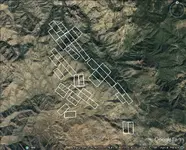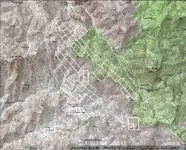Matthew had posted this claim map previously, and seeing as how the claim locations shown have been public for quite a long time I would think many have used it to explore that area in the hopes of finding something worthwhile. So what you say is certainly possible.
View attachment 1519804
If you want to take the time to do so, copy the claim outlines to a modern topo and/or GE views and take those along with you when you get your group together.
Should help with understanding what is what, when and if you can find the "pit mine" or any other nearby diggings out there.
Personally, I still don't believe this pit mine is the LDM. Partly because there was no mention of silver ore in the stories that Waltz or his closest associates passed on.
Nor was there any description of a cache located so deep in any mine, silver or gold, that it would take a group of men three years of work and all that equipment to recover it. Waltz only mentioned that one cache was in the "rat hole" tunnel down below the pit, and just behind the partial wall of rocks that he had concealed it with. The other two caches could be watched over from his mine, so that negates the "deep cache" theory as well IMO. If there was any connection between that "pit mine" and Waltz, I would still suggest that it may have been the mine that Waltz and Wieser helped Peralta with in the earlier chapter of that saga, with the true "LDM" being the one they or he found the Mexicans working elsewhere in the range at a later date. Having killed the Mexicans, and perhaps thinking they may have been related to their former partner, it makes sense that he might be reluctant to file a legal claim on his gold mine for that reason alone IMO.











